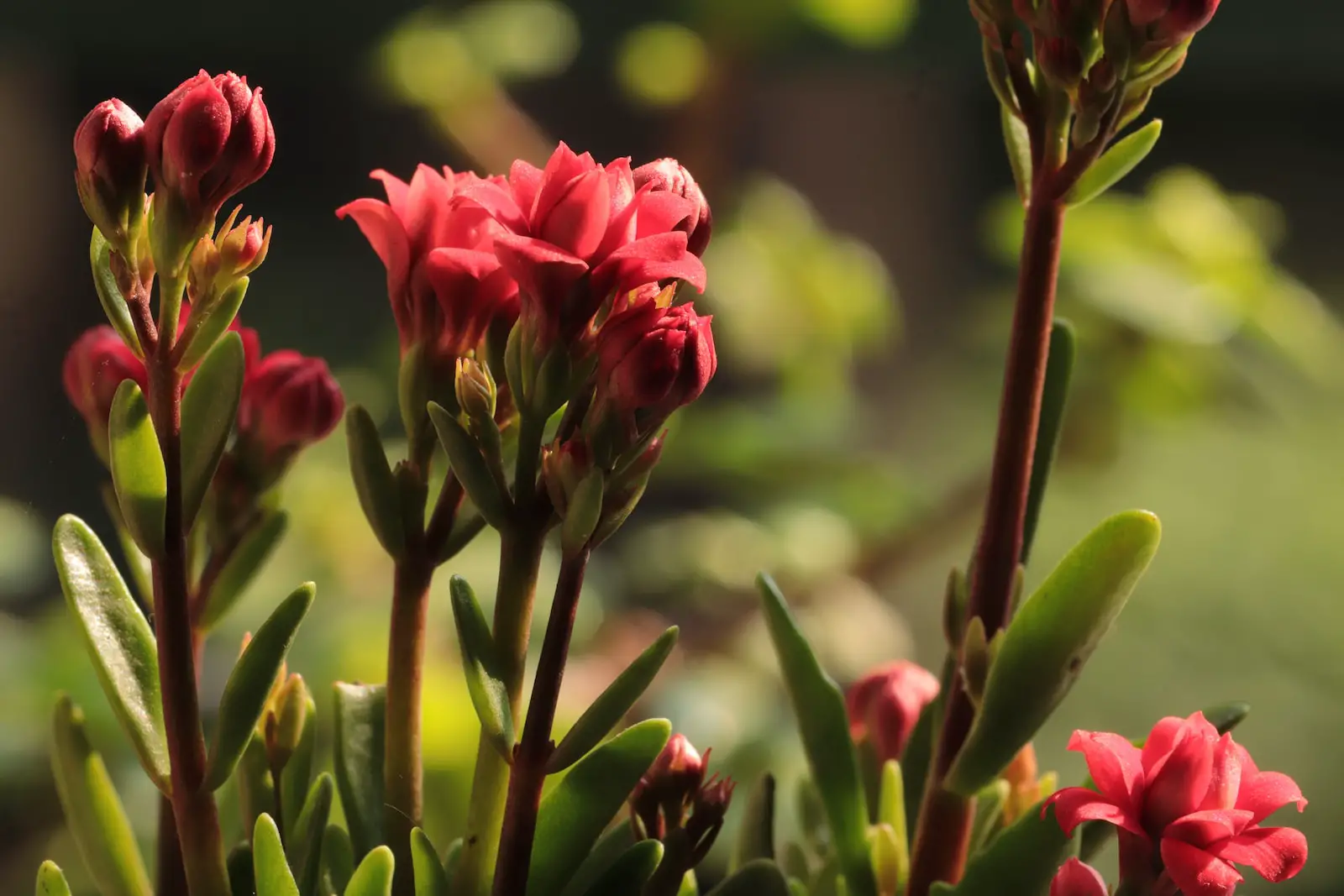The Kalanchoe plant, a succulent native to Madagascar, has become a popular houseplant around the world. Known for its attractive, thick, fleshy leaves and vibrant flowers, it’s a delightful addition to any indoor or outdoor garden. With over 200 species, the Kalanchoe offers a range of colors and forms, allowing gardeners to choose the one that best fits their aesthetics.
These plants are often used for medicinal purposes in different cultures. They’re praised not only for their ornamental value but also for their ease of care, making them a great choice for beginners. A remarkable feature of Kalanchoe is its ability to produce tiny plantlets along the edges of the leaves, which can grow into new plants.
Kalanchoe’s eye-catching flowers bloom in clusters, offering a burst of color during the colder months when other plants are dormant. Their long-lasting bloom cycle adds to their appeal, keeping the vibrant colors around for weeks or even months.
| Attribute | Details |
|---|---|
| Common Names | Kalanchoe, Widow’s Thrill |
| Botanical Name | Kalanchoe blossfeldiana |
| Family | Crassulaceae |
| Plant Type | Succulent |
| Mature Size | 8-12 inches in height |
| Sun Exposure | Bright, indirect light |
| Soil Type | Well-draining soil or cactus mix |
| Hardiness Zones | 10-12 |
| Native Area | Madagascar |
Kalanchoe Care
The Kalanchoe plant is often hailed as a low-maintenance succulent, making it a favorite among both new and experienced gardeners. It thrives in indoor settings, requiring minimal care.
Watering, light, and soil are the three key elements to consider for healthy Kalanchoe growth. With the right balance of these components, the Kalanchoe can grow vigorously and bloom profusely. Adhering to a proper watering schedule and providing the right amount of sunlight will keep this plant thriving.
Light Requirement for Kalanchoe
Kalanchoes need a good amount of bright but indirect sunlight. A west or south-facing window is usually perfect. Too much direct sunlight can scorch the leaves, while insufficient light can lead to leggy growth.
Soil Requirements for Kalanchoe
A well-draining soil mix, such as a cactus or succulent mix, is crucial for Kalanchoe. The soil must allow excess water to escape to prevent root rot, a common issue with succulents.
Water Requirements for Kalanchoe
Kalanchoes require a moderate amount of water. It’s best to water the plant thoroughly and then let the soil dry out completely before watering again. Overwatering can lead to root rot.
Temperature and Humidity
Kalanchoes prefer temperatures between 60-75°F (15-24°C) and can tolerate dry indoor air. However, they are sensitive to cold and should be kept away from drafts.
Fertilizer
During the growing season, fertilize Kalanchoe every month with a balanced, water-soluble fertilizer. Follow the manufacturer’s instructions for proper dosage.
Pruning Kalanchoe
Pruning can help keep Kalanchoe looking its best. Trim off dead or wilting flowers to encourage new blooms and remove any unhealthy leaves.
Propagating Kalanchoe
Kalanchoe can be propagated from leaf or stem cuttings. Simply place the cutting in soil and water sparingly until roots develop.
How To Grow Kalanchoe From Seed
Growing Kalanchoe from seed can be done, but it requires patience. Sow the seeds in a well-draining mix and keep them warm and lightly moist until germination.
Common Pests & Plant Diseases
Aphids
Aphids can be treated with insecticidal soap or neem oil.
Powdery Mildew
Ensure proper ventilation and avoid overwatering to prevent this fungal disease.
Common Problems With Kalanchoe
Yellowing Leaves
Yellowing leaves often result from overwatering. Check the watering schedule and drainage.
Leggy Growth
Leggy growth is typically a sign of insufficient light. Move the plant to a brighter location.
Pro Tips
- Rotate the Kalanchoe periodically to ensure even growth.
- Avoid watering the leaves, as this can lead to rot.
- Allow the soil to dry between waterings to prevent root rot.
- Encourage blooming by providing 14 hours of darkness for six weeks.




